There are moments in every woman’s life when love and admiration become entangled with something more complex. You can adore someone and still feel comparison quietly stirring underneath. You can celebrate her happiness and still wonder why your own dream has not arrived. These are moments when the Shadow Sister Archetype begins to move through the field. She is not here to shame us. She arrives to illuminate the parts of the feminine that are still learning how to love without fear.
The feminine mirror
Within the Dark Feminine Archetypes, the Shadow Sister is one of the most revealing mirrors. She represents the side of sisterhood that loves deeply but fears displacement. She wants to celebrate you, yet a part of her feels safer when you are slightly dimmed. She watches you shine and wonders where her own light has gone.
Every woman carries this archetype somewhere in her story. It is part of the collective wound that told us there could only ever be one. One beauty. One bride. One voice that matters. When we forget that abundance and affection are infinite, the Shadow Sister starts whispering. She wants belonging, but she looks for it through comparison instead of connection.
The quiet ways envy hides
The Shadow Sister rarely reveals herself through open hostility. Instead, she cloaks her envy in warmth, reason, or quiet intellect. Her words often sound supportive on the surface, phrases like “we’re all in the same boat” or “none of us have it figured out.” Yet beneath the friendliness lies a subtle pull toward sameness, an unconscious attempt to level what she perceives as threat. In her world, safety is found not in celebration but in equalising.

It is what The Harvard Gazette calls “quiet rivalry,” a form of friendship that feels genuine on the surface yet is continually measured beneath it (Harvard Gazette). It is not a lack of love; it is a nervous system searching for balance. She feels safer when you stay within a familiar range of success, beauty, or happiness. When you expand beyond that range, her sense of identity begins to wobble.
My own encounter with the Shadow Sister
I know this energy well because I have lived it from both sides.
When my sister got married, something inside me shifted. I was happy for her, but a quiet ache rose up that I did not expect. Her wedding represented something I had longed for but had not yet experienced. I felt left behind, even though no one had excluded me. I remember sitting in my room after the celebration and feeling ashamed that joy for her had mixed with sadness for me.
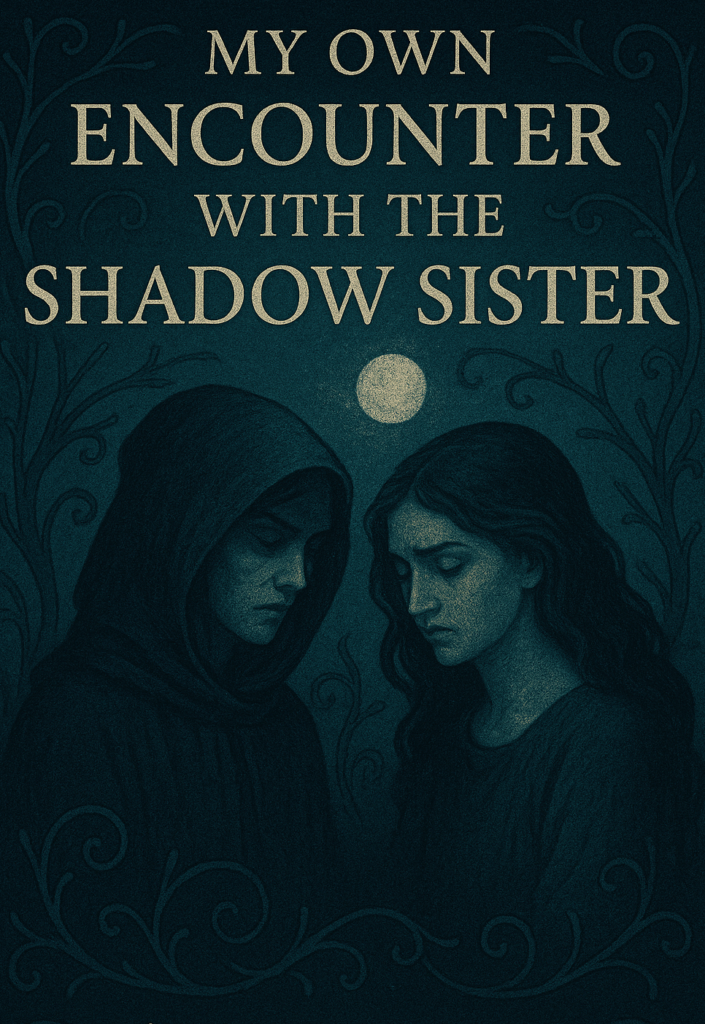
Eventually, I decided to speak it aloud. I told her, “There is a part of me that feels jealous“ I did not want it to build a wall between us. She was kind. She understood. The air cleared instantly. In that moment I realised that honesty transforms shadow into intimacy. When we speak our hidden feelings with humility, they lose their grip on us.
That experience taught me that the Shadow Sister is not a curse. She is a teacher of radical accountability. The healing begins the moment we can say, I felt envy, but I chose truth instead of silence.
When celebration is mistaken for bragging
I have also stood on the other side of the mirror. There were times when I was the one shining, and another woman misread my joy as pride. I remember feeling confused. I was simply expressing gratitude, yet it was received as arrogance. My excitement was interpreted as competition.
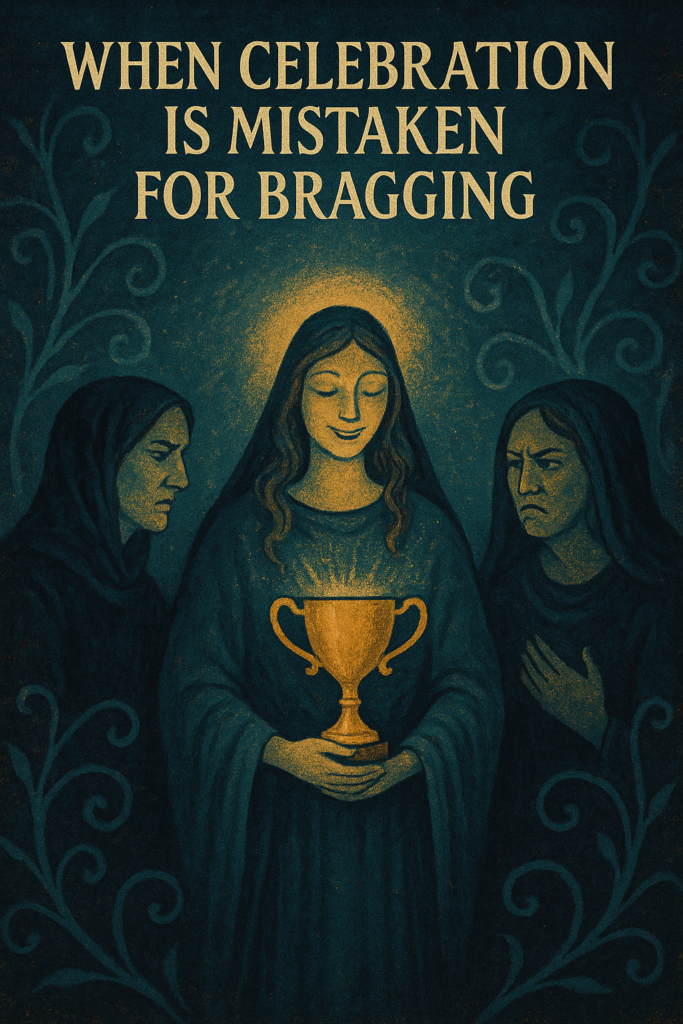
This is one of the most painful aspects of the archetype. To someone still carrying unhealed comparison, genuine celebration can feel like threat. What she calls bragging is often only the sound of joy she has not yet allowed herself to feel.
Psychology Today explains that jealousy often disguises itself as moral judgment, turning another person’s confidence into a perceived flaw (Psychology Today). When someone believes that shining is shameful, she cannot distinguish pride from self-expression. The cure for this is compassion, not defensiveness.
When I understood this, I stopped apologising for my light. I realised that self-censorship does not make anyone safer. It only reinforces the scarcity that fuels comparison in the first place.
Why sameness feels safe
At the root of the Shadow Sister dynamic lies the false idea that equality and sameness are the same thing. Many women learned that if one is loved or chosen, the others will be forgotten. This ancient scarcity creates an unconscious rule: we can be close only if we are the same.
Sameness feels like security, but it is actually stagnation. True friendship thrives on difference. The beauty of sisterhood is found when each woman stands in her unique frequency without needing to adjust it for comfort. When we stop measuring who has more, we begin to create space for everyone to rise.
The wound beneath comparison
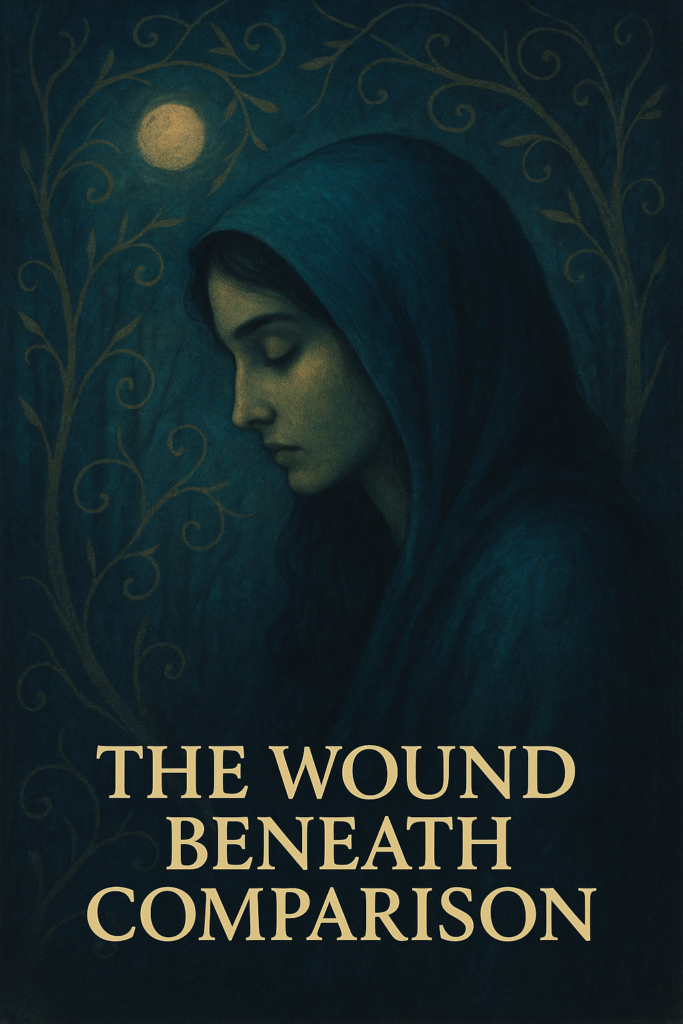
Comparison is rarely about the other woman. It is a reflection of our own unclaimed worth. In my article “Worth as Wealth | The Gate of Self-Worth”, I wrote that women often project envy when they have not yet fully embodied their own value. The Shadow Sister wants to feel equal, but she defines equality through external markers like money, marriage, or visibility. She forgets that worth is an inner frequency, not a social position.
When we remember this, we stop competing. We start recognising another woman’s success as evidence that expansion is possible for us too.
The magnetic field of growth
Another truth about the Shadow Sister is that she learns through proximity. Even when she resists your light, she still receives its codes. She observes how you hold boundaries, how you speak with grace, how you stay grounded in joy. She studies it quietly and, without realising it, she grows.
This is why she often misses the friendship when distance comes. It is not always you she misses but the reflection of herself she once saw through you. Being near a woman who is rising teaches her what rising feels like. That is the paradox of this archetype: even the envy becomes education.
Alchemy through honesty
Healing the Shadow Sister begins with truth. When you can name your own envy without shame, you dissolve the power it has over you. Speaking it aloud is not weakness; it is strength.

When I told my sister how I felt, I expected rejection. Instead, there was tenderness. The conversation became a bridge. It showed me that vulnerability is the most advanced form of maturity. Honesty is the door through which the feminine grows.
In “Self Respect: Why Your Crown Is Not Negotiable”, I described how self-respect is sovereignty in action. Owning our shadow is part of that sovereignty. When we can say, this feeling is mine, and I am learning from it, we reclaim the power that projection steals.
What happens when you grow beyond the pattern
When you outgrow the Shadow Sister dynamic, something gentle happens. You stop trying to prove yourself right or superior. You stop defending your happiness. You simply live it.
As you rise, some friendships will fall away. This is not punishment. It is calibration. The field reorganises itself around your new vibration. The women who can meet you there will feel like ease. The ones who cannot may perceive distance as arrogance, but it is simply alignment taking form.
Refinement and grace
The way we navigate this transition matters. In “The Queen’s Refinement: When Worth Evolves Into Class”, I explored how refinement is born from restraint. It is knowing you do not have to correct every misperception. You can be misunderstood and remain graceful.
Refinement allows you to hold compassion without collapsing your boundaries. It teaches you that power and softness can coexist. You no longer meet envy with anger. You meet it with elegance.
Compassion without entanglement
Compassion does not mean constant availability. You can love someone’s soul and still protect your peace. The art of staying kind while keeping distance is what I explored in “Saying Less, Holding More”.
True compassion is quiet. It no longer argues, explains, or seeks validation. It simply blesses and releases. When you hold compassion in this way, you teach through example rather than correction.
Collective healing of the feminine
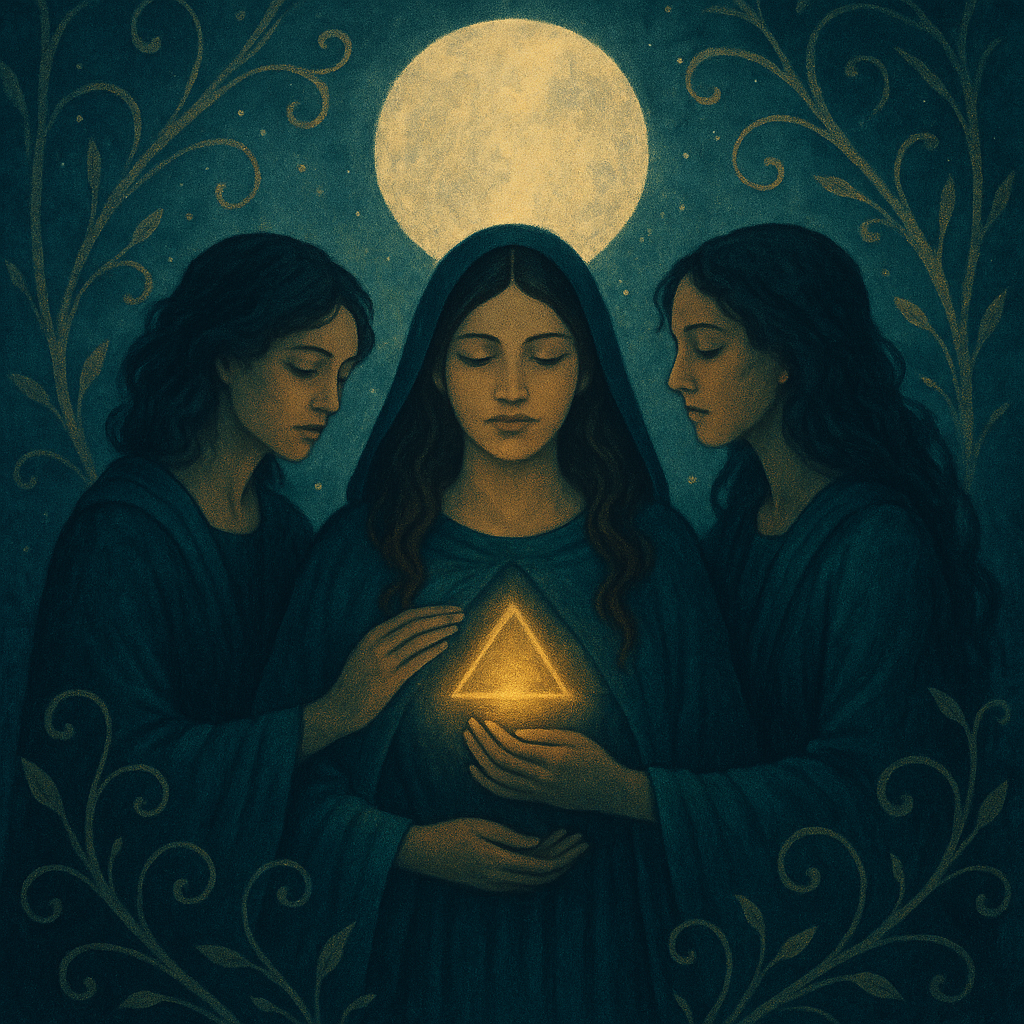
The Shadow Sister archetype is not only personal; it is ancestral. For generations women were conditioned to compete for limited recognition. The story was always the same: only one could be chosen. This narrative fractured sisterhood and created mistrust among women who might otherwise have built temples together.
When we name this wound, we begin to rewrite it. The healed feminine understands that radiance multiplies. Each woman’s success becomes an invitation for another to rise. The collective shifts when we celebrate difference instead of fearing it.
Integrating the light and shadow
To integrate this archetype is to hold both truths: that we have been hurt by envy and that we have felt envy ourselves. The work is not to deny either experience. It is to meet both with humility.
When you acknowledge the part of you that once compared, you free it from shame. You no longer need to hide behind perfection. You can say, I have been the shadow sister, and I have also been the one she envied. Both experiences belong. Both can become medicine.
Final transmission
The Shadow Sister is not your enemy. She is the unawakened part of the feminine still learning that love is abundant. When you meet her, whether in another woman or within yourself, meet her with clarity and compassion. Do not dim your light. Hold it steady. Let your steadiness show her what safety beyond comparison feels like.
If you must part ways with a friend, do it with love. Bless her journey. And if you feel the shadow rise within you, speak it, own it, and let honesty set you free.
Because every time a woman admits her envy yet chooses grace, she heals the lineage that taught her to compete. Every time she refuses to shrink or shame, she strengthens the web of sisterhood. Every time she turns shadow into awareness, she restores sacred balance to the feminine collective.

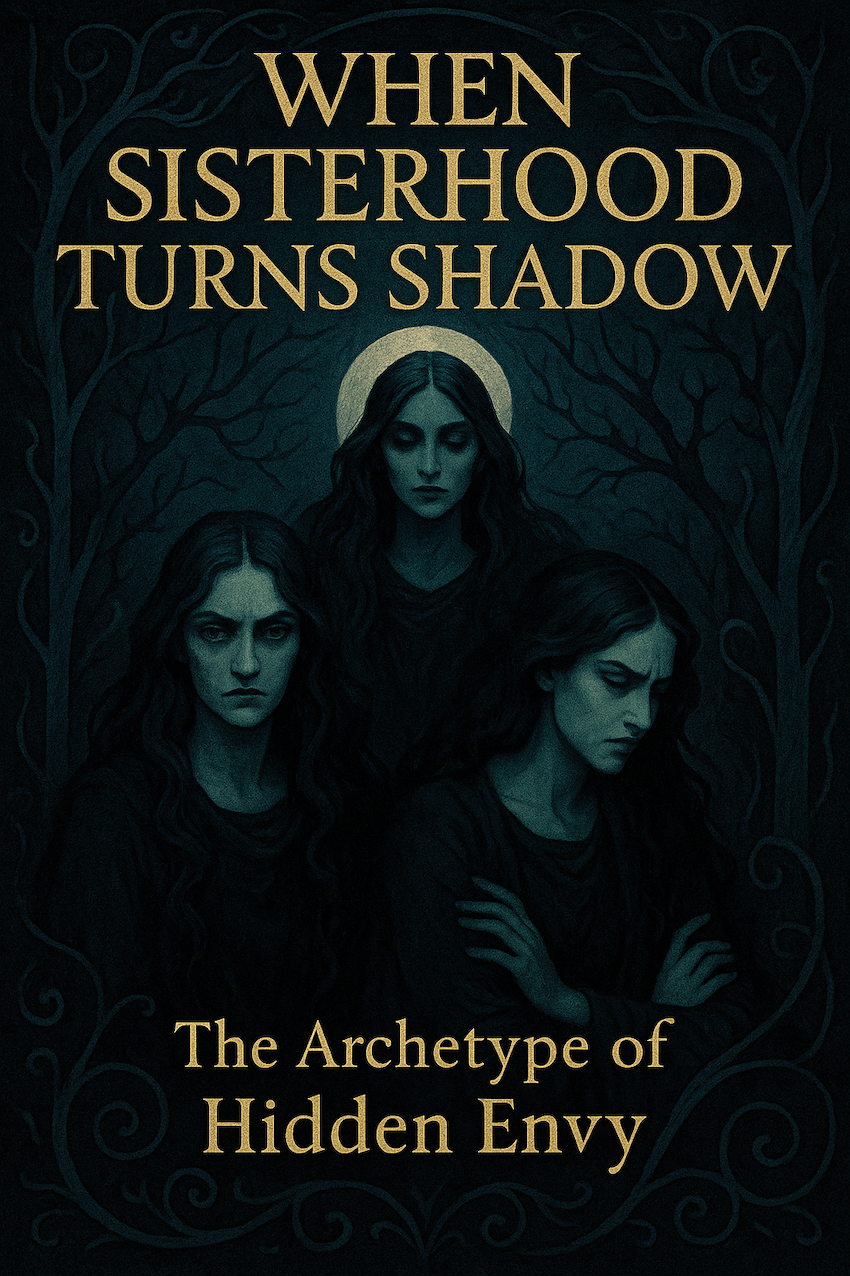





Share your reflection below... I’d love to hear how this transmission lands for you.
This reflection space is part of a living temple of dialogue, a place for insight, resonance, and respectful exchange. All comments are read with care and may be lovingly edited for clarity, formatting, or safety before publication. Please share from your heart, speak with kindness, and keep this space high in frequency. Promotional links, aggressive language, or off-topic content will be removed. Thank you for honoring the spirit of this sanctuary.